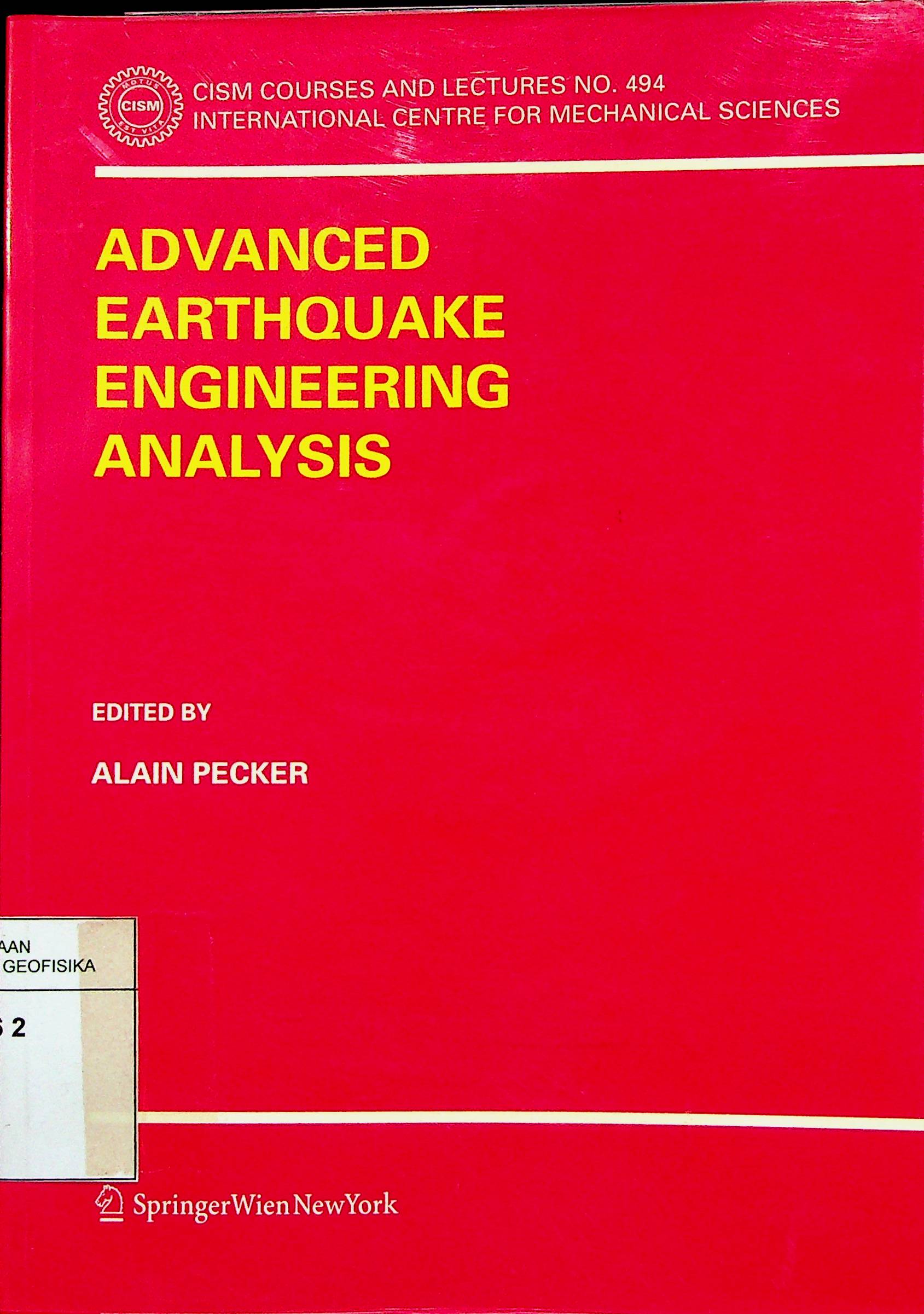This book contains lecture notes, albeit not covering all materials, delivered at the course on Advanced Earthquake Engineering Analysis that took place at CISM Udine in July 3-7, 2005. During the last decade, the state of the Art in Earthquake Engineering Design has made significant steps towards a more rationale analysis of structures. Scientists have long recognized that earthquake design is guided by displacements and deformations rather than forces. However due to the historical background of structural engineers in static analyses, effects of earthquake on structures have been viewed as forces acting on the structures. All presently available design building codes are developed along these lines. Our knowledge of ground motion characteristics, earthquake geotechnical engineering, structural behavior (design and numerical analyses) and model tests have advanced to a point where it is possible to anticipate a significant move from force based design approaches to displacements based design approaches. Although displacement based design approaches constitute the kernel of most research programs, they have not yet been incorporated in the State ofPractice.The purpose of the course was to review the fundamentals of displacement based methods, starting from engineering seismology, earthquake geotechnical engineering, to focus on design, analysis and testing of structures with emphasis on buildings and bridges.The five main topics presented during the course are detailed below. Each topic started with the fundamentals and then focused on advanced, State of the Art, subjects. The lectures were heavily illustrated with examples drawn from actual projects in which the lecturers are deeply involved. • Engineering Seismology: measurement and characterisation of seismic motions; prediction ofground motions with empirical attenuation relationships; physics behind earthquake signals; site effects. • Geotechnical Engineering : non linear soil behavior under cyclic loading ; non linear site response analyses; soil-structure interaction including non linear effects; earthquake resistant design of foundation; performance based design. • Seismic Analyses: introduction to structural response and computer modelling; overview of linear elastic analysis methods; non linear inelastic analyses; pushover analyses; non linear time history analysis. • Seismic Design: need for displacement based design; fundamentals for direct displacement based design and assessment; strength and deformation capacity. Seismic Testing: introduction to seismic testing; shake table tests; pseudo dynamic tests; centrifuge testing; special topics and illustration.The coordinator of the course wishes to express his gratitude to P.Y. Bard, G.M Calvi, R. Pinho, N.Priestley and P. Sollogoub for their active participation in the elaboration, preparation and delivery of the course. He and the lecturers are also indebted to Pr. Jean Salen$on who, as non resident Rector at CISM, suggested the topic of the course and provided several constructive suggestions during its preparation. They also want to express their gratitude to the Secretariat staff of CISM for their efficient handling of administrative matters before and during the course.
5
ADVANCED EARTHQUAKE ENGINEERING ANALYSIS
ALAIN PECKER
Penerbit :
CISM, Udine Printed in Italy
Tahun :
2007
Buku Text
-
No Scan114
-
No Klasifikasi624.176.2
-
ISBN
-
ISSN
-
No Registrasi009A/VI/2009
-
Lokasi Terbit
-
Jumlah Hal24
-
Label624.176.2Pec a
-
Versi DigitalTIDAK
-
Versi FisikTIDAK
-
Lokasi Rak Buku Fisik//
-
Jumlah Exemplar Fisik Tersedia-






